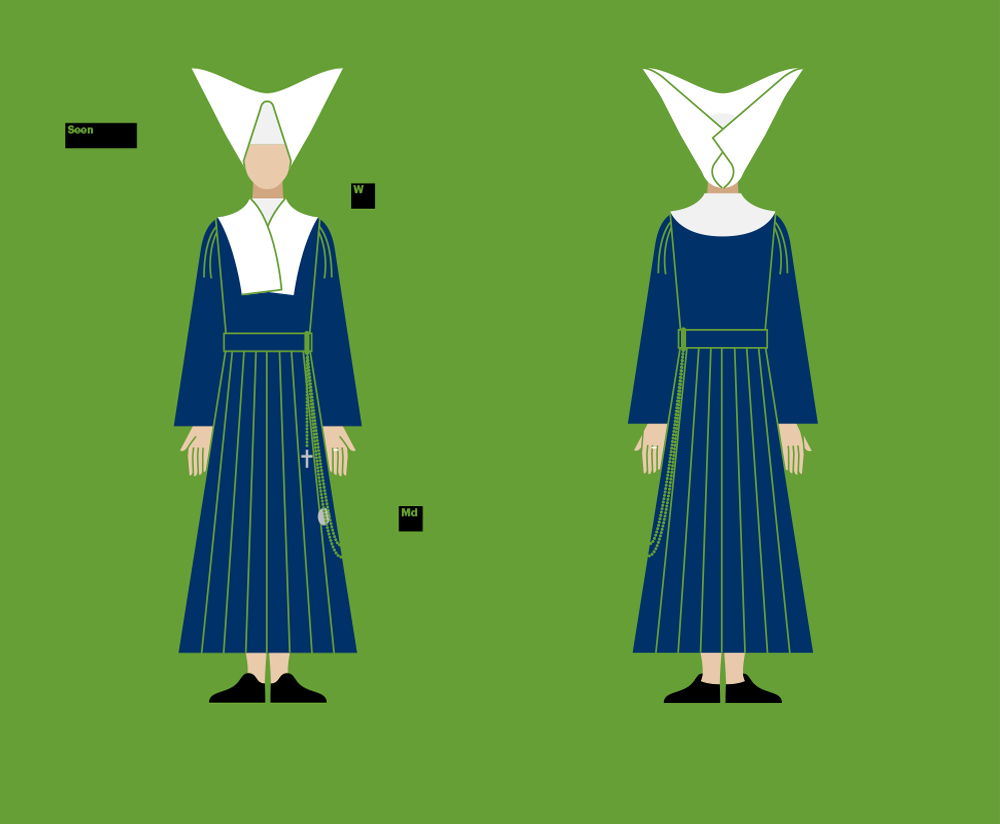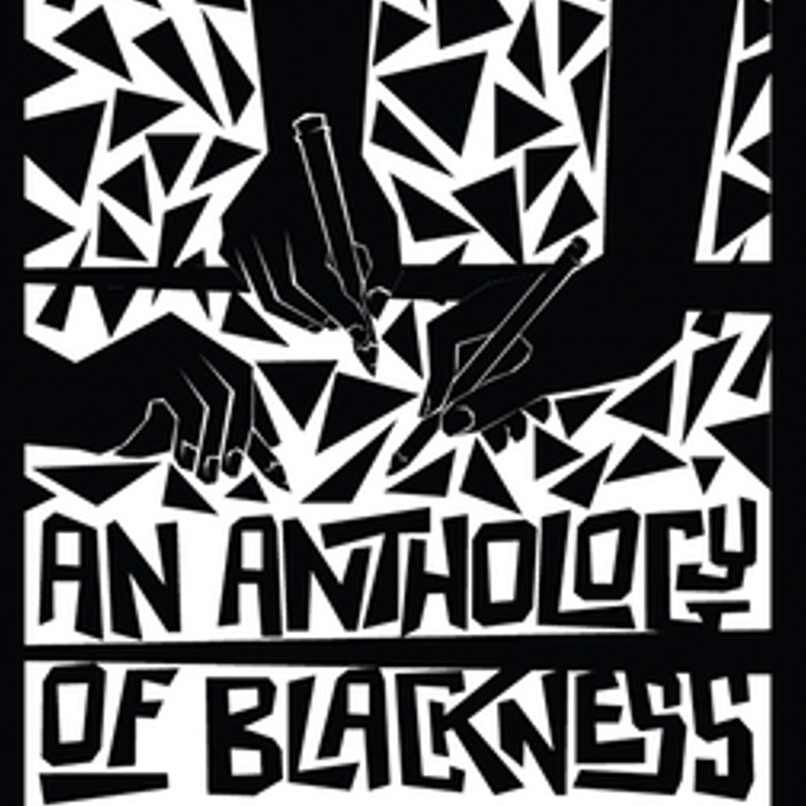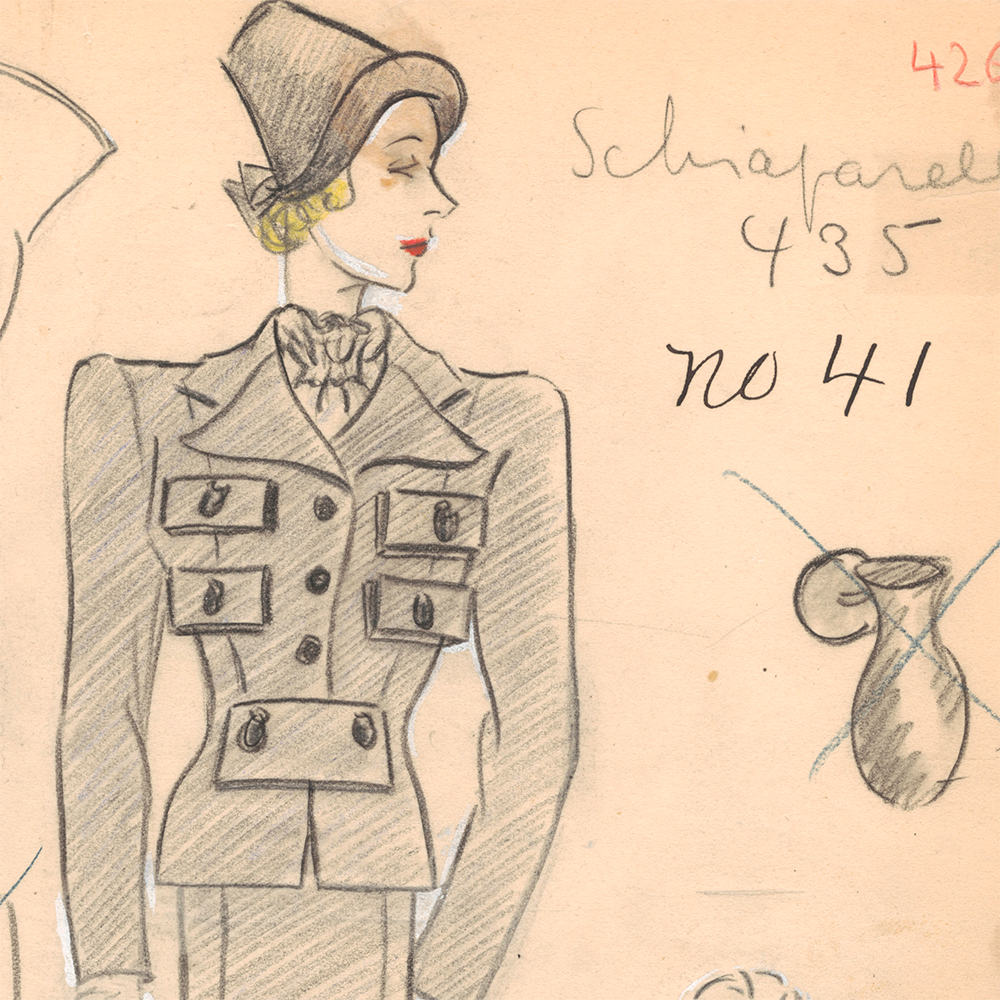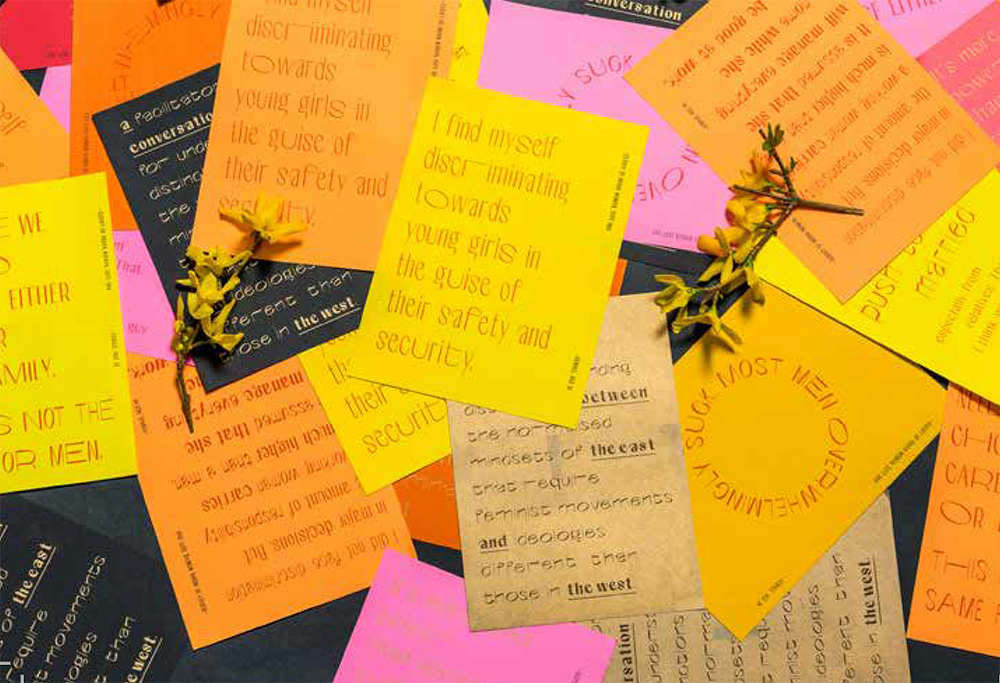
Lucienne Roberts, Rebecca Wright|Books
December 8, 2016
Looking Good

Nuns and sisters wear a type of uniform to identify them in a variety of ways. The above images show the most common component parts. Each religious institute’s habit comprises some, but not all, of these items.
The following are excerpts from Looking Good, the just-published GraphicDesign& title. GraphicDesign& publishes books exploring the symbiotic nature of graphic design practice. Graphic design is always inextricably partnered with something else and each GraphicDesign& project connects graphic design to one of a myriad of subject areas. Looking Good: a visual guide to the nun’s habit is a GraphicDesign& Religion title, with forays into Fashion and Semiotics along the way. This collaboration is between GraphicDesign&, theologian Veronica Bennett, and graphic illustrator Ryan Todd. Images and text reproduced with the permission of GraphicDesign&.

Order of St Benedict, Rule of St Benedict. Present-day communities wear black and white, and often retain the full traditional habit.
Lucienne Roberts + Rebecca Wright, founders of GraphicDesign&: On the Habit and What Makes it Interesting
From Julie Andrews in The Sound of Music to screenprinting nun Sister Mary Corita Kent, mystic Hildegard of Bingen to Nobel Peace Prize recipient Mother Teresa, nuns occupy a peculiar place in popular consciousness. They are distinguished by their dress, the habit, which is visually minimal but full of meaning.
Through initial discussions with Veronica we quickly realised that the story of the habit was not just related to the history of the Catholic Church but was also intertwined with broader cultural concerns that we found fascinating. As her research developed it became clear that the history of the religious habit is a story of restless relationships—the struggles of the powerful and the poor; of politics, social care and the role of women; and of the interplay of culture, fashion and faith. To capture this rich and resonant context, the illustrations in this book are annotated with genealogical information and anecdotal asides that tell the stories behind each individual habit. Variously incorporating visions and miracles, high drama and humble beginnings, persecution and insurrection, these tales are connected by the powerful emotional response that the habit has produced.

Order of St Ursula, Rule of St Augustine. Traditionally, Ursuline nuns wore a wide-sleeved black habit with a black belt and a wimple extending over the shoulders.
Veronica Bennett, Cambridge theology graduate + researcher: On Researching the Habit and Choosing What to Include
One thing I discovered very quickly – and one of the reasons a book like this is needed – is that there isn’t an existing body of work that documents the habits of different religious communities, especially of women. Once I got in touch with communities directly, however, I discovered a wealth of knowledge.
A Brigittine abbey in America sent me a beautiful hand-bound pamphlet it produces, which includes information on its habit. I visited a Cistercian Abbey in Waterford, Ireland, where the nuns happily spent time talking about their habit and loved the idea of people knowing more about it. These communities were excited to share their knowledge and make information about their heritage more widely available.
This book isn’t a comprehensive catalogue of every habit. The aim is to encourage understanding of the habit, and its wearers, so that readers understand the main themes that have dominated thinking within the Catholic Church and inspired the lives of nuns and sisters over the last 1,500 years. I also wanted to show more recent changes; the focus on missionary work, social service and teaching. I hope readers will see the habit’s role and impact, the way in which younger movements adopt and adapt it, and how interesting it can be in its social and historical context.

Daughters of Charity of St Vincent de Paul. The contemporary habit allows many variations but the version shown here is the iconic ‘cornette habit’ of the 19th-century European community.
Phil Baines, Professor of Typography and one-time trainee priest: On Personal Recollections of the Habit Vestments
I grew up surrounded by religious clothing. My great aunt Fanny – Sister Augustine – was a nun. I can’t remember the name of her order, but they’re the ones with the big pointy hats. I remember a photograph of her sat on the lawn on a chair in Windermere in the full habit. She only came to visit occasionally but it was quite a staggering outfit. We also had nuns teaching us at school, and in junior seminary we were near a Carmelite convent—not that we ever saw them—but I was aware of them.
I was fascinated by priests’ vestments because as an altar server I would see them in the vestry. The sacristan [who looks after the room where vestments are kept] was a nun and she would lay each item out in a particular way, in the reverse order to how the priest would put them on, on this sort of high table a bit like a plan chest, but for vestments. There were different drawers for different colors, and the colors were coded for the seasons. I used to like the ritual of putting on the garments. As altar servers we had our own cassocks and cottas, which were black, and we had to wear black shoes. I liked being part of the services – the ceremony, the processing and the dressing up. I think the most powerful vestments were the black ones worn at funerals, which were very dramatic. I remember the black.
Observed
View all
Observed
By Lucienne Roberts & Rebecca Wright
Related Posts

Books
Jennifer White-Johnson|Books
Amplifying Accessibility and Abolishing Ableism: Designing to Embolden Black Disability Visual Culture

Books
Adrian Shaughnessy|Books
What is Post-Branding: The Never Ending Race

Arts + Culture
Hannah Carlson|Books
Schiaparelli’s Pockets

Books
Alison Place|Books
On Fighting the Typatriarchy
Recent Posts
What now? Make a Plan to Vote ft. Genny Castillo, Danielle Atkinson of Mothering Justice Black balled and white walled: Interiority in Coralie Fargeat’s “The Substance”L’Oreal Thompson Payton|Essays
‘Misogynoir is a distraction’: Moya Bailey on why Kamala Harris (or any U.S. president) is not going to save usRelated Posts

Books
Jennifer White-Johnson|Books
Amplifying Accessibility and Abolishing Ableism: Designing to Embolden Black Disability Visual Culture

Books
Adrian Shaughnessy|Books
What is Post-Branding: The Never Ending Race

Arts + Culture
Hannah Carlson|Books
Schiaparelli’s Pockets

Books
Alison Place|Books
